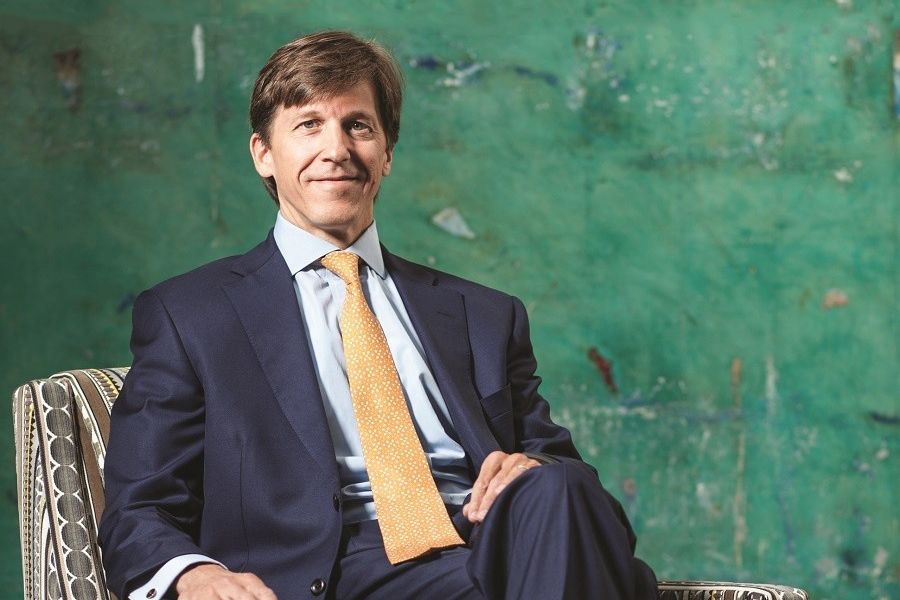Market volatility brings alternative investments back into focus

Asset managers struggle to get investors on board before it's too late.
At least on paper, it should be easy to make the case for allocating portfolio assets toward more alternative strategies designed to reduce some of the risk imbedded in a 10-year bull market for stocks.
Reality, however, shows that investors and many financial advisers often head toward the kind of insurance that alternatives promise to provide after the damage is done.
Nevertheless, corners of the asset management industry continue to push for what seems like a logical hedge to swelling equity market risk.
The latest example is coming from Spouting Rock Financial Partners, a 12-year-old family office that is throwing its hat into the asset management arena with a dedicated focus on alternative strategies.
Spouting Rock, which plans to lure wealthy investors with such sophisticated strategies as hedge funds of funds, real estate and activist investing, has staffed up for the effort.
Last month, the new entity hired Andrew Smith, former co-head and chief operating officer at Aberdeen Asset Management Americas, as chief executive. And this week, John Coyne III, former vice chairman of Brinker Capital, joined the firm to lead the platform’s distribution.
Mr. Coyne left Brinker in December, 30 years after co-founding the $21 billion investment management firm.
“The mantra I’ve been hearing is money management is a commodity,”Mr. Coyne said. “Well, we don’t want it to be a commodity, we want to be some of those exotic ingredients to add to your formula and not be correlated to what you’re doing otherwise.”
“Going forward, we think investors will be looking to enhance and protect portfolios,” he said.
Such efforts to lure investors away from high-performing long-only strategies by promising that risks will be hedged have a long history of trying to swim against the grain.
“It’s definitely difficult to raise assets in alternative strategies, even 10 years into a bull market, but volatility helps get people thinking about alternatives,” said Dick Pfister, founder and president of AlphaCore Capital, which has grown to $350 million three years after launching as a liquid alternative mutual fund shop.
A big part of the challenge, he added, is that most alternative strategies can’t compete with the performance of the long-only equity strategies. The alt strategies that do compete, he said, are only doing so by loading up on equity beta and getting away from their primary mission of hedging market risk.
For his part, Mr. Coyne sounds a lot like Mr. Pfister and other proponents of risk-hedging strategies.
“We recognize that we can add value on the periphery, and we’re not going to have 100% of anyone’s portfolio,” Mr. Coyne said. “We think we can add tremendous value by coming in as satellite solutions with things that frankly have been out of favor for 10 years.”
For some in the financial advice industry, allocating to alternatives when the market looks frothy is seen as akin to timing the market.
“If a client reduces risk now in anticipation of a sell-off, then they will want to increase risk later, so you have to be right twice,” said Rush Benton, senior director of strategic wealth at Captrust.
Marty Bicknell, chief executive at Mariner Wealth Advisors, takes a similar position regarding alternatives.
“Alternatives should already be part of the allocation if they belong in the portfolio,” he said. “The No. 1 thing an adviser could have done in 2008 and 2009 was convince their clients to do nothing.”
According to Morningstar Inc., investors have not been favoring alternative strategy mutual funds even as the stock market gets long in the tooth.
This year through September, liquid alt funds have experienced net outflows of nearly $6 billion. Over the same period, actively managed domestic equity funds had more than $41 billion in net outflows.
Last year, when some analysts were forecasting a market correction tied to the election of Donald J. Trump, liquid alt funds had more than $520 million worth of net inflows, while active equity funds had more than $51 billion worth of net outflows.
This year through Oct. 18, large-cap growth mutual funds as a Morningstar category gained 7.8%.
Over the same period, returns on the eight liquid alt fund categories ranged from a loss of 5.7% to a gain of 28 basis points.
“Liquid alternatives that can zag when the equity market zigs have underperformed in the current, yet aging, bull market,” said Todd Rosenbluth, director of mutual fund and ETF research at CFRA. “However, if market volatility picks up further, these differentiated strategies could hold up better.”
While investors in general might favor alternatives when the markets get choppy, financial advisers tend to be more set in their ways when it comes to alternatives.
“It’s always a good idea to be hedging your portfolio against market risk because the market doesn’t send out a memo warning you it will get choppy,” said Kashif Ahmed, president of American Private Wealth. “The trick is to have them ahead of time.”
Learn more about reprints and licensing for this article.








